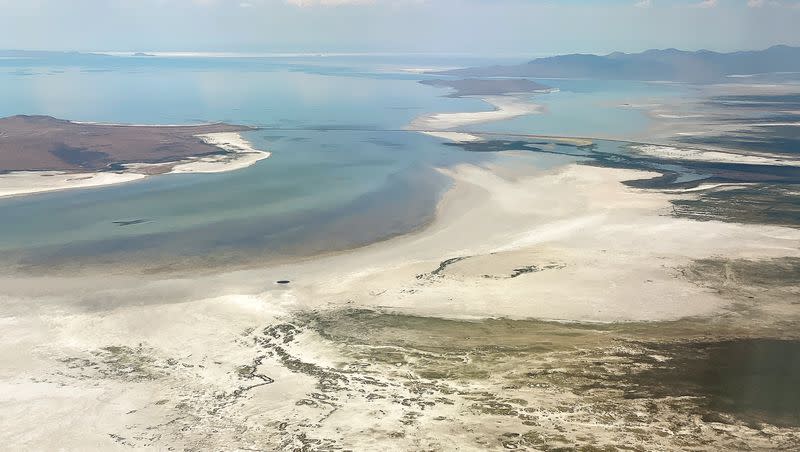Lawmakers talk Great Salt Lake and its challenging, complex nature

The Utah Legislative Water Development Commission heard firsthand the intricacies and complex nature that revolves around water quality health of the Great Salt Lake in determining a standard for “impairment” and what that would look like.
John Mackey, director of the Utah Division of Water Quality, told committee members on Tuesday that his office fielded a petition from Friends of the Great Salt Lake to list Gilbert Bay, in particular, as impaired due to dwindling lake levels and its high salinity. And selenium, a mineral naturally found in soil and water, is a toxic metal that has been detected in a bird egg at Gilbert Bay.
Mackey said the lake is surveyed as part of ongoing water quality monitoring and testing and Utah has a site specific selenium standard for the Great Salt Lake.
But in terms of carrying out a traditional geochemical test that is like a yardstick for water quality at the Great Salt Lake, Mackey said it is difficult, adding that each water body in the state has to meet individualized testing standards based on if that body of water is meeting its beneficial use.
“It’s a fairly challenging process and I will say for the Great Salt Lake, establishing standards are harder than on all other water in all other water bodies. It’s a unique and challenging environment in which to do chemistry,” he said. “It’s different, really, than any other state in the country.”
Related
Lee and Curtis propose more money to help the ailing Great Salt Lake
Great Salt Lake dust on snow helped hasten melt 17 days early
As the division was weighing the request for an emergency proclamation, the situation changed.
“We considered the petition very seriously. And we got to the point of being ready to list. We needed to make sure that everybody was aware of what we were doing. And we got water,” Mackey said. “So, if you look at the lake condition today, it’s much better. So we got some breathing room and avoided an emergency declaration.”
Rep. Joel Briscoe, D-Salt Lake, pushed back on the division’s determination.
“So we may not have the tools to define the lake as impaired but looking at it we sure know it is impaired,” he said. “That’s what I am thinking.”
But Mackey remained firm.
“What I intended to say is under an emergency situation we think we had enough information that we could list, but it doesn’t get us anywhere. Because of the types of impairment, the next step towards a solution isn’t there based on the information that we have,” he said. “So what it is, and it is important, it is a message with the listing under that emergency situation, which is not a bad thing.”
Briscoe also wondered aloud if the lake’s salinity levels could be used as a consideration for impairment.
While salt is not a bad thing — especially in the context of a saline lake — Briscoe said inordinately high saline levels threatened the lake’s ecoystem.
Related
“We don’t want to turn it into a freshwater lake. It’s not what is designed to be, but we don’t want it to be hyper saline. We don’t want it to be Papa Bear saline or Baby Bear saline. We want Mama Bear saline. We want to be that spot in the middle where it is appropriate salinity,” Briscoe said.
Mackey said the division has discussed setting a range of salinity for the lake.
“Even with a range, it is really not that different than setting an individual number. The lake moves around that number, right? The lake moves in and out of that number and so it becomes a challenge and using salinity, when you are done how do you delist this? Because there’s forever this swinging back and forth.”
Mackey said there is also a risk of the U.S. Environmental Protection Agency to supersede Utah’s decision making on the lake that an impairment listing could trigger. It would, however, be an extremely rare act.
“There’s an incredible amount of effort and interest and resources that the state is dedicating to the Great Salt Lake right now. And this type of effort and interest, you know, is what it takes to unearth the information that’s necessary to make the difficult, decisions that are necessary and to invest in the resources that are necessary as well.”
While EPA has technical expertise, the Great Salt Lake is a steep learning curve, he emphasized.
“Getting up to speed on the issues and the problems and challenges on the Great Salt Lake is a big lift. There are many, many more people more knowledgeable about the challenges of the Great Salt Lake and a lot of them are in this room right now,” he said. “It’s a very challenging lake to work with.”

